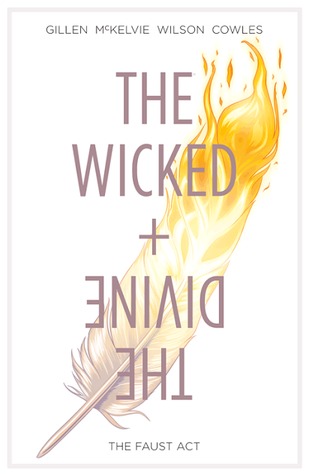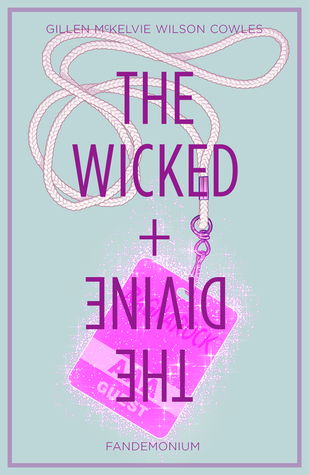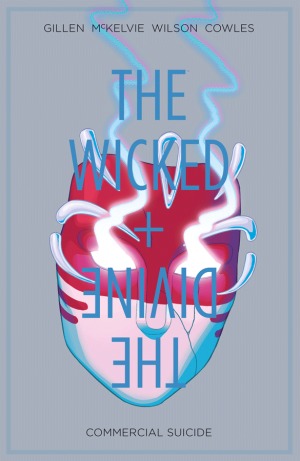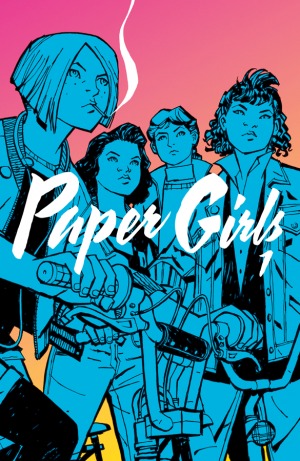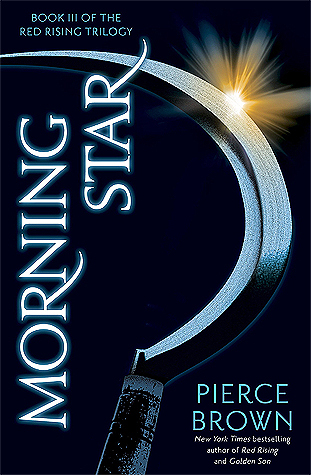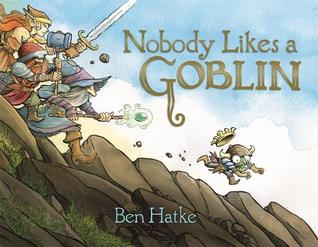So, if you’ve frequented RTET or its attached social media accounts with any regularity of late, you probably know of my recent tumble into love with the Shades of Magic series. I don’t stop talking about it. I hardly stop tweeting about it. I keep
pushing it on friends and strangers. I’ve become a book-pusher—a book-pusher, I tell you!!
But anyway—when I found out V.E. Schwab, the author of the series, would be coming to Phoenix Comicon this year, I was beyond excited. Like, super beyond excited. Geeking out about Kell, Lila, Holland, Rhy, Red London, White London, OHMYGODEVERYTHING with not only strangers who also love the series, but the author, too?! Huzzah!!! And when the opportunity to interview her at said event came about, I was absolutely delighted (and okay, maybe a little bit terrified) to have the chance to pick her brain about the series, writing in general, and even just a bit about culinary escapades. She was kind enough to meet me one morning before the con ratcheted into full gear for the day, and fielded my (sometimes vague, sometimes oddly specific) questions about her books and the writing life.
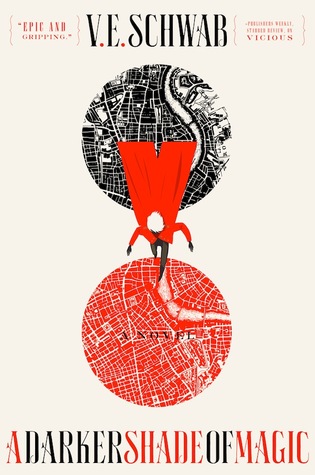
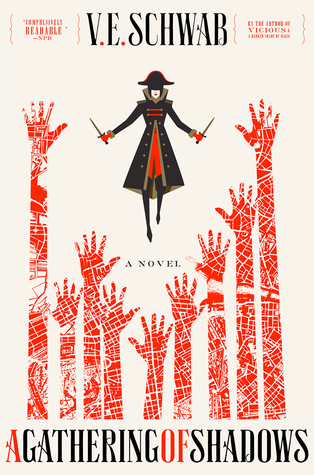
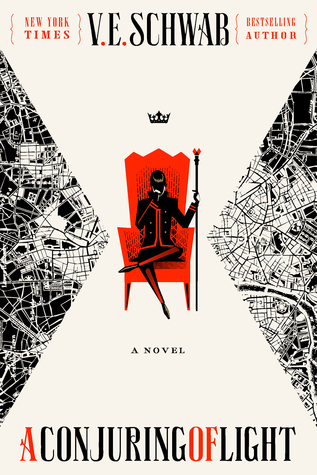
Disclaimer: Things that could be considered spoilery for all published books of the Shades of Magic series are contained herein. If you haven’t read A Darker Shade of Magic and A Gathering of Shadows yet, proceed at your own risk!
Me: So, I kind of just don’t shut up about your books. I was telling one of my friends about them, and what she took away was, “Oh, so it’s like Regency fantasy? That kind of seems to be a genre.” And I said, “Well, I don’t know—I don’t think that’s the thing that really defines the Shades of Magic.”
V.E. Schwab: Yeah, especially because only one of the Londons is based in our world. I think it’s definitely more of a secondary world fantasy. Three of the four Londons have nothing to do with our world whatsoever. I got to really build them from scratch—they just have an anchor point in 1819 London, and that’s one of the settings, but I definitely wouldn’t say that’s the primary setting.
Me: What made you choose that late Georgian Regency period? Was it because there was a crazy George?
V.E. Schwab: That was part of it. I really did want to play with a version of the world that had Crazy George, but also I really wanted pre-electricity. I wanted the pre-Industrial Revolution because even though the Londons have diverged at this point in the past and are now taking their own courses, I wasn’t really interested in how they might treat technology differently—or, if I was interested, that was a different story than I wanted to tell. I wanted to focus on this cast of characters, and I worried that as rich as I could make the world, if I started going much later, I was going to have to handle technology in each of the worlds. And technology and magic is a different discussion than these worlds, which, the whole question of the series is, how does magic shape a society in each of these situations. Grey London has forgotten magic, so it has no magic and it looks like our world. Red London is a world in which magic thrives, and it shows. White London is a world that has an adversarial relationship with magic, and so it’s being starved out. And in Black London, magic consumed everything. I wanted to really give due focus to that question, of the relationship between magic and nature and people, as compared to magic and technology, which really is its own genre. There are several books out there that deal with magic and technology at their intersection, and it just wasn’t the story that I wanted to tell.
Me: Another thing I thought was really cool was that so many stories that do have any part in the Regency are concerned with the upper classes, and with Lila we get to see the dark underbelly.
V.E. Schwab: I look at all of my books, and I’m really interested in insider-outsider culture. And so, in the series, even the characters who do belong inside of a culture feel like outsiders. Kell technically belongs to the upper echelon of society in Red London—he’s been raised essentially as a prince, but he has never fit in. He doesn’t feel like he belongs there. Lila has come up through the bottom, through the lower echelon of society of Grey London and she didn’t really care. She’s going to claw her way toward whatever she wants. I think it’s a much more dynamic place to play in. And then of course I get to have someone like Rhy, the prince, who is born in that society and in many ways does fit, but at the same time he’s an outsider because he doesn’t have magic. So all of my characters are outsiders in some way.
Me: That’s the perfect segue to my next question! I remember yesterday at your spotlight panel you talked about how you like to write about the lines between things. So I started thinking about the lines between characters, and that made me think about how the circumstances of their birth seem to be something that informs their personal conflict.
V.E. Schwab: Oh, definitely.
Me: Kell and Holland—Holland is like, we’re both Antari, but I was born in this really shitty place and you had it so much better than me. And Lila, who is always talking to Kell like, oh poor Kell, you had food and roof over your head, but nobody loves you. Even Kell and Rhy—Kell was raised in that royal family, but he feels apart, and then Rhy feels apart because he doesn’t have magic.
V.E. Schwab: I think the thing you have to remember is, to treat characters like people, we don’t look at how they see themselves only, we look at how other people see them and how they see other people. So I try to focus really, really hard at the points of intersection between characters in my books. It’s way more interesting to see Kell through Lila and Rhy and Holland’s eyes—I think if we only saw Kell through Kell’s eyes, it would be kind of dull because Kell is very much a little…a little self-righteous, and he feels very victimized. And so I look at foils in all of my books between characters, and this is really a special project in that normally a character has one foil. Each character has a foil, someone who kind of butts up against them, is at perpendiculars. Kell is literally the pivot point for the whole series—everyone is Kell’s foil.
Me: I was thinking about that. I was like, well, there’s Alucard, and then there’s Holland…
V.E. Schwab: They are all Kell’s foil! So Kell and Rhy are foils because—you have to look at basically whoever pisses each other off, right? Kell and Rhy fight like brothers. They are family and they are not family. They are totally at odds half the time, but they love each other. Kell and Lila are complete foils—again, it’s just oil and water. They just butt at all heads. And then obviously Kell and Holland are foils. And then yes, Kell and Alucard are foils. Basically, it looks like Kell pisses off everybody that he is around.
Me: It’s so good, I love it so much. Thank you so much for writing it.
V.E. Schwab: Thank you for reading it!
Me: So, something I am super nerdy about—I love languages, and so that’s immediately something I home in on when I’m reading a book. And I love how all the little bits and pieces of the languages we see in your books, whether it’s Arnesian or the language of Kell’s magic—it’s just such an organic part of the world. Sometimes in books it feels like flavoring just thrown in there. How did you go about creating those languages and words?
V.E. Schwab: I never thought I would—growing up, I was really gun-shy to read fantasy (especially classic fantasy, the Tolkien-style) because it felt really exclusive. It felt like if I didn’t memorize an entire fictional language, then I didn’t really belong to the fan club. And so, when I set out to write the Shades of Magic series, it was really important to me that I wrote something accessible. Because of that, I’d be very careful on how much of the foreign languages I used because I never at any point wanted it to feel like someone was being excluded if they didn’t follow that train of thought, if they didn’t memorize, oh, you know, everything from As Hasari means to heal, to avan means hello, to tiny things like Vas ir means go in peace—all these little things that were really important for taking a setting and making it a world, the same way details are important for taking a character and making it a person. I felt really strongly that they needed to be there, but I also had to be very careful in how I used them and the quantity that I used them. I actually love your wording because I do tend to treat them like spice in that they spice my world, but they’re very much part of the characters’ culture. I was on a panel yesterday and I was talking about this in that the things that we use to inform a world, besides description, are language and idiom, pun and humor—what actually informs a culture, not just a people. And so I actually build my whole worlds kind of from the inside out. I don't design my characters first. I design my world. And then I design the insiders for that world, and then I design the outsiders. My characters are invariably the outsiders, but before I ever design them, when I design my world, I design the foundations of a language—so, which linguistic systems I’m going to pull from, which syllabic rhythms I’m going to work for. The Veskans, for instance, in A Gathering of Shadows, are very much Gaelic—they have very hard edges, a very consonant language, similarly to the White Londoners, just a different breed. One’s Scandinavian-based, and one is definitely Scottish Gaelic. And so I pick out those seeds. I don’t design the entire language. I make it as I go and I keep a glossary of it, make sure that it feels cohesive and feels natural without being—like, this is not Dothraki from Game of Thrones. I don’t actually have the entire language. But what I do have are the grammar and syntax. I always know what order everything goes in and that keeps it from feeling like gibberish. I know the subject-object relationships, I know that it’s not like French wherein the descriptor usually follows the word—it’s much more simple than that for Arnesian. So those are the things that I think of, and I think of, what are their folktales? What are their songs? What are the things they sing in taverns, and what are the things they sing on their holy days, what are these blessings—you learn in A Conjuring of Light they don’t actually have a word for good-bye. They have a word for “go in peace,” and they have a word for “until I see you again,” but there is no formal parting word.
Me: And that says so much about the culture.
V.E. Schwab: Yeah, that’s a reflection of a culture. And so for me, I treat language like that. I treat language like another facet of the culture I need to know, because the way that Kell and Rhy use the Arnesian language is different. Kell has a better handle on it just because he is stubbornly determined to be a commoner, and to be treated like a commoner. Rhy has an excellent handle on it, but it’s almost like the kid who has been taught French in school without ever actually going to France. He has a really, really strong book knowledge of all languages because he was raised to have a book knowledge of languages. And so there’s the way they function with language, as compared to the fact that the king and queen never speak Arnesian. They only speak High Royal, which is like our English, our common tongue. And Lila, in Conjuring, will call them out on that—basically that Maxim is addressing a citizen, a commoner, and he’s demanding something of him and he’s doing it in High Royal, and the commoner doesn’t speak High Royal. There’s this fundamental divide, and language really helps me play up insider-outsider culture. It’s been really fun in the series because Lila is not from Red London and she only speaks English, and so when she arrives in this world—it’s been really exciting to do her point of views because I get to watch her learn a language, and pick it up from its roughest, most essential parts that she would’ve learned aboard the Night Spire, to actually becoming a citizen of this world. That’s one of the coolest ways to show language—through people who know it and people who don’t. In a lot of A Darker Shade of Magic, when she first gets there, you don’t get a lot of dialogue happening around her because she doesn’t know the language.
Me: It’s funny that you said “not like Dothraki,” because I feel like the way you use it in the books feels the way it does when George R.R. Martin uses it. It just feels like you can, as the reader, pick up on what words mean, and you can pick up on the syntax just from reading a little bit in the book.
V.E. Schwab: And that’s the goal. I want my readers, by the end of one of the books, to have a little bit of understanding when then they see avan, or aven, which means “blessed,” or mas vares, which means “my prince.” Which gets used in a lot of different ways because they address Rhy that way, and that’s good, but they address Kell that way and it drives him absolutely crazy. I want my reader to pick up on those tiny little jabs, but I also had to create a story that wouldn’t be lacking if they didn’t. If you go through and you just skim the Arnesian and treat it like gibberish, you will still enjoy the story. [Brandon] Sanderson was on a panel yesterday and we were talking about that. It’s like an Easter egg, it’s that extra little piece for the readers that want that.
Me: Yes! I say, “Kers la?” in my head now.
V.E. Schwab: Yeah, exactly. And I have people who have designed tattoos that have, like, As Hasari for a nurse, and things like that. I’ve seen people do a lot of hand lettering for As Travars. I sign A Darker Shade of Magic “As Travars,” and I sign A Gathering of Shadows “Stas Reskon,” which means “chasing danger.”
Me: So…is Holland totally your favorite?
V.E. Schwab: Yes. Have you seen the cover for Conjuring at this point? I won’t say who’s on the cover, but I will say that it’s probably the main character of book three. Because Kell’s on the cover of book one and it’s his book, Lila’s on the cover of book two and it’s arguably her book, and the character on the cover of book three, whether it’s Holland or Rhy—it’s their book. But I will say that Holland is my favorite character in the whole series, and it’s because I play short cons with some of my characters and long cons with other ones. And Holland’s my long con. He’s the one that it takes the entire series to get his story, and…I love his story.
Me: In the first book, and correct me if I’m wrong, I think nothing is written from his perspective at all. And so when you’re first reintroduced to White London in A Gathering of Shadows and it’s from Ojka’s perspective, you’re like, “Oh hey, that’s Holland!” But then you’re like, “Wait…is that Holland?” And then he says, “Call me Holland.”
V.E. Schwab: And then you get Holland’s perspective.
Me: And the vibe is just so completely different from any other time we’ve seen him in the books. Is it just because we’re seeing him from his own perspective now? Is it because he’s now got a little hitchhiker from Black London?
V.E. Schwab: It’s definitely the first time you get to see him from his own perspective. So Holland—even knowing nothing of Conjuring, you know that he was tortured for seven years at the hands of the Danes, and in order to survive he essentially killed a part of himself. And that’s understandable, but because of that, Holland is very, very, very guarded. You will never get anything of him from someone else’s perspective. If you’re in another perspective, like Kell’s or Lila’s or Rhy’s, and you see Holland, you will not be able to tell what he’s thinking, you will not be able to read him, any of that. Only in Holland’s perspective do you get Holland, and it’s still a very guarded perspective. He’s never going to be an emotional person. He can’t. He can’t, at this point, be an emotional person. He can be angry, he can be frustrated, but he’s never going to show vulnerability. He’s been trained—it’s been beaten out of him essentially. He has learned that the only way to survive in this world is by not showing weakness. You get a lot of his perspective in book three, and it’s been really exciting to actually show the person that he was before the Danes. You get to see how he became the Holland who would torture Lila in the streets in book one. It’s going to be really cool for any later readers or people who choose to go back and re-read to see Holland in book one—and people hated him at the end of A Darker Shade of Magic. They wanted comeuppance for him. And over the course of the series, I’m watching that shift to they want him to be okay. And that’s all I can ask for. As an author, my greatest goal is to turn a villain into an antagonist into a protagonist. And so the fact that people’s opinions of him are shifting—and it will be interesting when you read Vicious, because a very similar thing happens with a character named Victor Vale, who everyone starts out being like, “Fuck this dude.” He is awful. He murders people, he tortures people. He has the ability to control pain, so he’s just a terrible person, and then about halfway through the book, people are like, “Aw man, this dude is awful, but I kinda see where he’s coming from,” and then by the end of the book they’re like, “Yeah, Victor Vale!!” That’s my favorite challenge as an author. I think every author has a little personal thing that they like to do—mine is taking the ostensibly least relatable or least likeable character and making them the one that you want to win.
Me: That’s so funny that people hated Holland. Kind of from the beginning, I was like, “I feel like this guy is awesome. I know I shouldn’t think that, but…”
V.E. Schwab: I wanted people to at least think there’s more to him. And I think the transformation is happening in Gathering because nobody let themselves really think, “Okay, we’re going to find out more,” because they thought he’d be dead. It was interesting, because about half of my readers thought Holland was really dead, and half were just like, “Let’s see this. Bring him back.”
Me: He’s not dead until I see a body that doesn’t breathe anymore.
V.E. Schwab: Exactly. And I think people knew—people should’ve suspected he wasn’t dead because I hadn’t shown Black London yet. If I had shown Black London, then maybe…
Me: Chekhov’s Black London.
V.E. Schwab: Yeah, exactly. You haven’t seen Black London yet, I just sent him into Black London! I will admit, though, that when I got to write a flashback in Conjuring that involved the Dane twins, I immediately got chills again. I was like, “I forgot how much I love to hate you as people!” They’re full-on sadists.
Me: I love the Danes so much.
V.E. Schwab: One of my favorite pieces of art that’s ever been done was done by Victoria Ying, who is just an incredible illustrator, who has this picture—it’s now hanging on my wall—of Holland standing between the Dane twins and they each have a hand wrapped around his throat, and he’s staring forward. It gives me chills every time I see it. It’s so good. He’s such a tragic character.
Me: Oh man. So good. SO GOOD.
V.E. Schwab: I know, we’re going on a Holland tangent.
Me: I could probably talk about the Shades of Magic forever, but another interesting thing you mentioned in your panel yesterday was how you write for three different age groups—middle grade, YA, and adults. So that’s three books a year? That sounds crazy to me.
V.E. Schwab: Some years there’s two, just because of how the schedule happens, but most of the time it’s three.
Me: How does your writing process work? Do you switch between projects?
V.E. Schwab: Well, it’s been screwed up by the Shades of Magic actually doing really well, and so I’m doing a lot of travel and a lot of promotion right now. I thought, “Oh, I’ll just take my work with me.” I have since discovered that there is very little time and much less energy to actually sit down and write when I’m traveling. There’s an adjustment I’m still trying to make. Everyone assumes I’m a very fast writer because of how many books I write. I’m actually a very slow writer, which means I have to be a very consistent writer. I have to do it almost every day that I can. And I can only write one book at a time. I can’t switch back and forth between. And I think if I wrote contemporary realism I could, or if I wrote all my books in the same world I could, but switching between magical systems—because I write This Savage Song, which is set in a slightly futuristic society that’s based on a version of the United States, and then I have the Shades of Magic, which is very historical fantasy. I can’t switch back and forth. They both have really complicated magic systems, and I think I would-- I work in third person close, but I would lose all sense of voice, I think.
Me: Culture shock.
V.E. Schwab: Yeah, it would be culture shock. I need a two-day transition to move between projects, so I tend to write one whole project at a time. It makes me constantly behind on something.
Me: To get three done, do you have to be super regimented?
V.E. Schwab: I normally am. Right now I’ve been thrown, just because this is the first year that I’ve had an adult book, A Gathering of Shadows, and a YA, This Savage Song, come out within four months of each other. I have just started to wind down on A Gathering of Shadows promotion and This Savage Song is about to come out.
Me: I’m so excited for This Savage Song.
V.E. Schwab: I’m so nervous. It’s going to be my most divisive book. Without question, it is the darkest, strangest thing I’ve ever written. What’s fascinating is I’m watching some of the reviews come in, and it’s 5 stars or 1 star. But that’s how I want it to be. I don’t want 3-star book reviews. I would love people to either love it or hate it, and it’s a very dark YA novel. The whole book is an existential question about what it means to be human in a monstrous world. And it’s not for everyone. It’s very specifically for 17-year-old me. And so because of that, it’s finding the right readers. And it’s that thing you have to remind yourself as an author, that there is no book you could ever write that it would appeal to everybody. But if you stay true to your craft, you will write the book that is right for somebody. It’s very hard to remember when there are reviews and all of these things pouring in—you want everybody to like you. You want everyone to like your books. But at the end of the day, as long as the right people find your books—there are books out there for everybody. Your book doesn’t have to be the book for everybody.
Me: I was reading the blurb for it, and the dark, gritty fantasy-ish vibe reminded me of—I was going to say old school Holly Black, but pretty much all Holly Black.
V.E. Schwab: I love Holly Black so much. I love White Cat, I love the Curse Workers series so much. I grew up on Neil Gaiman and Holly Black and Susanna Clarke and T.H. White—all of these very, very classic—but Holly is probably one of my favorite writers in the entire world.
Me: Do you see their influence on your own writing?
V.E. Schwab: I see it on my aesthetic. I don’t see it in my voice, but I see it in my aesthetic. I think our worlds are drawn in the same color palette. I definitely read Neverwhere or I read White Cat and I feel like they’re in the same colors.
Me: That’s a cool way to put it.
V.E. Schwab: It’s the only way I can really think of it. There are books out there that I really enjoy that are written in such bright colors that there’s no comparison between us. But I honestly read a Holly Black book or a Neil Gaiman book and I think that people who like them would potentially like my books.
Me: Very cool. I have one last question, and it has nothing to do with books. My website is half about books, half about food, and when I told my co-editor I was going to interview you, she said, “Oh, it says on her website that she likes baking! You should ask her what her favorite thing to bake is.” So. What do you like to bake?
V.E. Schwab: I’m a stress baker. Writing is terribly insular. It’s just all in your head, all the time, and so sometimes it’s nice to use your hands instead of your head for a little while. But I am one of the best in the world at making dark chocolate sea salt chocolate chip cookies.
Me: That sounds amazing.
V.E. Schwab: And I have been making them since I was five.
Me: What?!
V.E. Schwab: I was on TV when I was five. My mom was a caterer, and we were on the television together, like on a Good Morning America-style thing, and I was five and I was helping her bake these. And I have perfected that recipe since then. I am now 28, and I make such a bad-ass chocolate chip cookie.
Me: Can you just do it off the top of your head?
V.E. Schwab: Oh yeah, I don’t look at anything. I don’t measure anything. I know exactly how it’s supposed to taste at every single stage of the recipe. It’s super simple. I can bake really complicated things, like triple chocolate tortes with raspberry glaze. I make a really, really good triple lemon cake, which is where you infuse lemon at three different stages of it, like a soaked lemon cake. I make very good banana bread. But my favorite thing to make is just chocolate chip cookies. And I’ll come home, and it’ll be like an hour after dinner and my housemate will be like, “You know what we don't have? We don’t have cookies.” And I’m like, “…okay, give me ten minutes.” In ten minutes the cookies will be in the oven, fifteen minutes in and we’re just having cookies. She knows that she can just ask me, “Can you just make me cookies now?”
Me: What you should try—have you ever used mesquite flour?
V.E. Schwab: No. Is it smoky?
Me: I think it depends on where the tree grows, the terroir, stuff like that…but the one I bought kind of has a cinnamon-y cocoa-y flavor. And you don’t use it for all the flour in the recipe.
V.E. Schwab: That would be so good. I’d love to try that in an oatmeal raisin.
Me: I used it in a David Lebovitz recipe that had oatmeal in it, and it was really good. So if you ever get the chance…
V.E. Schwab: Nice. My trick with banana bread is that I cut the sugar in half and switch to brown sugar for the other half, and it makes that caramelization in it.
Me: Brown sugar is the best sugar, bar none.
V.E. Schwab: Oh, it’s the best. Also, more bananas than the recipe ever calls for.
Me: All the bananas.
V.E. Schwab: ALL the bananas. But brown sugar is the golden gift of baking that I don’t think people use enough. And it does tweak the baking times a little bit because it crystallizes very quickly, but everything is better with it.
Me: I agree—brown sugar is the best sugar.
And on that sweet note, we closed out the interview so she could head off to her panels for the day and I could attempt to plot my comicon-ing for the remainder of the weekend. Thanks again for taking the time to talk with us, Victoria! It was so much fun to chat with her, and now my appetite is even more whetted for A Conjuring of Light, the final book in the Shades of Magic, due out in February 2017. How will we wait a whole YEAR?!? ((insert distraught emoji here)) At least This Savage Song will be out very soon, on July 5th, so our next hit of V.E. Schwab-y goodness is not too far over the horizon. Which is your favorite of her books? Who’s your favorite character? What questions would you have liked to ask her? Hit the comments down below and let us know!
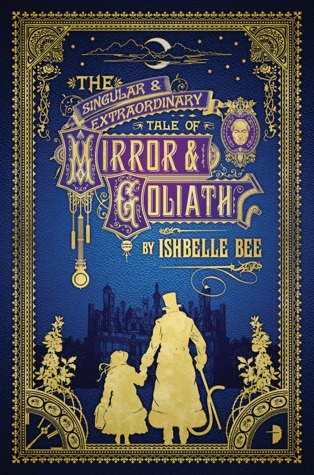 Title: The Singular & Extraordinary Tale of Mirror & Goliath
Title: The Singular & Extraordinary Tale of Mirror & Goliath




